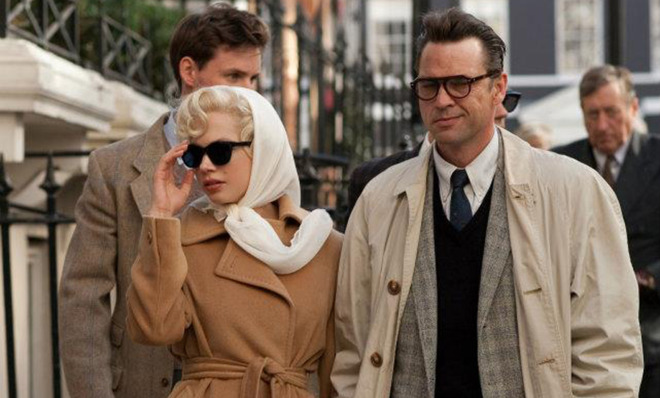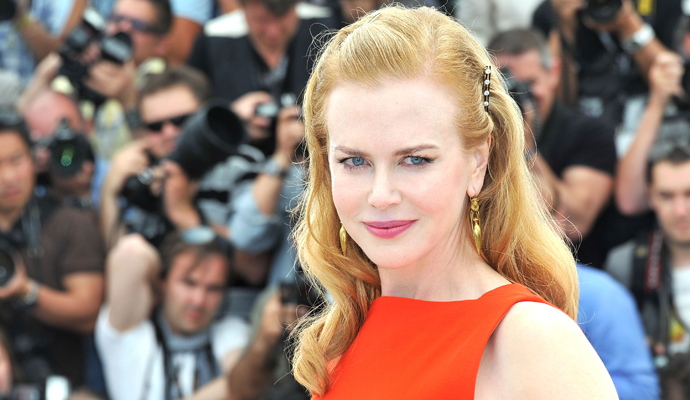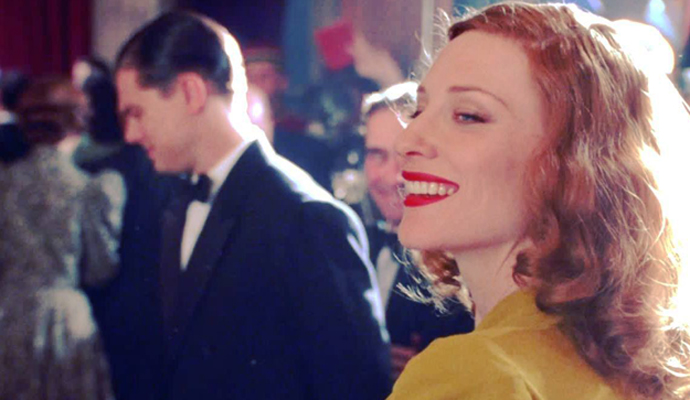6 ways a modern actor can successfully play a pop culture legend
With movies about Marilyn Monroe, Grace Kelly, and Janis Joplin on the horizon, here are lessons from some of Hollywood's most memorable biopics

In April, Jessica Chastain signed on for a new role that could win her an Oscar — or prove to be one of the most disastrous choices of her career. She's playing Marilyn Monroe, or more specifically a barely disguised Monroe called Norma Jeane, in an adaptation of Joyce Carol Oates' novel Blonde.
Monroe is a daunting role. More than 50 years after her death, Hollywood has struggled to find an actress with as much star quality and sex appeal. Over the years, a few actresses have been brave enough to play Marilyn, and some have even done it well. Michelle Williams was nominated for an Oscar for her performance in 2011's My Week with Marilyn — the closest Monroe ever came to an Oscar nod.
How did she pull it off? "In a way, you had to remove the fact that she was an icon and put that out of your mind — because it would be too daunting — and instead try to think of her as an ordinary girl, which is what she wanted to be thought of as," said Williams.
The Week
Escape your echo chamber. Get the facts behind the news, plus analysis from multiple perspectives.

Sign up for The Week's Free Newsletters
From our morning news briefing to a weekly Good News Newsletter, get the best of The Week delivered directly to your inbox.
From our morning news briefing to a weekly Good News Newsletter, get the best of The Week delivered directly to your inbox.
How can an actor do credit to the superstars of the past? Here are some lessons actors should take to heart before stepping into the role of a pop culture icon:
1. Identify with the subject.

Who could possibly know what it's like to be a famous star? Another famous star, of course. Unlike Cheryl Ladd, who played Princess Grace in the 1983 telemovie Grace Kelly, Nicole Kidman doesn't actually look all that much like Princess Grace. But in terms of shared life experiences, Kidman's casting in the upcoming biopic Grace of Monaco makes perfect sense. Like Grace, she is a statuesque, glamorous star who won an Oscar after "uglifying" herself for a role. The similarities don't end there; Kidman told Entertainment Weekly that she identified with "a woman leaving her art, leaving the thing she's passionate about, to go and create a home and a family."
2. Do your homework.
A free daily email with the biggest news stories of the day – and the best features from TheWeek.com
When Kirsten Dunst played silent movie star Marion Davies in The Cat's Meow (2001), it was probably a less daunting role than Monroe or Princess Grace. Davies — a major star in her time — has been mostly forgotten by modern audiences, offering the opportunity for a looser rendition. But despite that freedom, Dunst took Davies seriously, even seeking assistance from Davies' Los Angeles-based fan club. "She was like the Lucille Ball of her time," said Dunst. "I thought she was such a cool, intelligent lady, and everybody has portrayed her so wrong." Upon seeing the movie, club president Nick Langdon gave her the thumbs-up: "The good news is that Marion comes across very well."
3. Look the part.
Hollywood has long attempted to tell Janis Joplin's story. A decade ago, two rival projects were planned — one starring Renee Zellweger and the other starring Pink — but neither came to fruition. The latest iteration is a Lee Daniels-helmed biopic titled Janis Joplin: Get It While You Can, which is set to star Amy Adams. But while the actress has a proven track record as a singer, a subset of Joplin fans have already condemned the casting. Some have complained that Adams is too pretty to play Joplin, who was nominated the "ugliest man on campus" during her college years. Others have suggested that Adams, at 40, is already too old to play Joplin, who died at 27. (Fortunately, Joplin looked old for her age, and Adams looks young — so if anything, she might seem too young for the role.)
4. Or at least get the voice down.

In The Aviator (2004), Cate Blanchett looked nothing like Katharine Hepburn — but her verbal mimicry was good enough to win her an Oscar. "The interview I found most helpful was one [Hepburn] gave in 1973 to Dick Cavett," explained Blanchett in an interview. "Then I turned off the visuals and just recorded the sound and listened to the way she breathed, what she chose to laugh at, and when he would ask her more personal questions what she would do with that information. You can hear what someone thinks when you are not watching them."
5. If you don't look or sound the part, have a good excuse ready
When Dennis Hopper was improbably cast as Frank Sinatra in 2003's The Night We Called It a Day, he had a novel excuse: he was giving an "impression" rather than an "impersonation" of Ol' Blue Eyes. But his impersonation didn't extend to his singing voice; even before Hopper was cast, the studio had hired a Sinatra soundalike, and the singing was dubbed — rather more convincingly — by Aussie actor and Sinatra tribute artist Tom Burlinson.
6. Above all, don't be boring
If you're playing a charismatic star, make sure you're appearing in a movie worthy of his or her talents. Keefe Brasselle, who looked and sounded just like vaudeville and Hollywood star Eddie Cantor, played him in The Eddie Cantor Story (1953) — and his career fizzled immediately after. Despite his earnest efforts, Braselle probably couldn't have saved the movie. "If that was my life," Cantor himself said upon seeing the movie, "I didn't live."
Mark Juddery is a journalist and author based in Australia, who writes for Mental Floss, The Huffington Post, The Spectator and numerous other publications. His latest book, Best. Times. Ever. (Hardie Grant), published in Australia and the UK, explains why almost everything is better than it used to be.
-
 Political cartoons for January 3
Political cartoons for January 3Cartoons Saturday's political cartoons include citizen journalists, self-reflective AI, and Donald Trump's transparency
-
 Into the Woods: a ‘hypnotic’ production
Into the Woods: a ‘hypnotic’ productionThe Week Recommends Jordan Fein’s revival of the much-loved Stephen Sondheim musical is ‘sharp, propulsive and often very funny’
-
 ‘Let 2026 be a year of reckoning’
‘Let 2026 be a year of reckoning’Instant Opinion Opinion, comment and editorials of the day